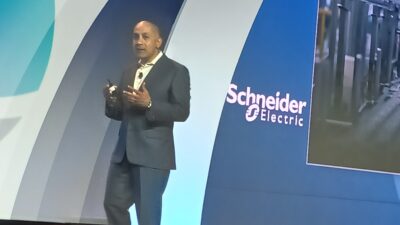Buyers of automation, control and instrumenation systems, in general, want their suppliers to offer the best combination of efficiency, reliability, and safety; they are not evaluating them on their manufacturing or supply chain expertise. In addition, when pressure for financial performance can result in flat or decreasing research and development (R&D) and capital budgets, suppliers who s...
Buyers of automation, control and instrumentation systems, in general, want their suppliers to offer the best combination of efficiency, reliability, and safety; they are not evaluating them on their manufacturing or supply chain expertise. In addition, when pressure for financial performance can result in flat or decreasing research and development (R&D) and capital budgets, suppliers who save money by outsourcing are freer to invest that money in innovation.
Automation and control system suppliers provide value through innovative combinations of operator interface, logic and motion controls, sensors, actuators, and the networks that connect them all together. Historically, they have typically owned the majority of the vertical elements of the supply chain. But starting in the 1990s, many sold their printed circuit board facilities to allow them to focus on key components, final assembly, and testing. A second wave of outsourcing is now underway, with vendors working with partners to leverage global engineering, manufacturing, and post-manufacturing services.
With roughly 80 to 90% of costs of a control product contained in material, finding low-cost, high-quality sources for components is critical. So, like their customers, control system suppliers are increasingly outsourcing higher level assembly, system, and functional testing and even final test and assembly. And, again like their customers, many are finding their best sources in Asia.
Cost-benefit considerations
When Asia is part of a manufacturing supply chain solution, manufacturers need a carefully calculated approach that looks at a number of cost-to-benefit considerations to ensure they optimize operations from a global perspective. Some vendors pursuing growth strategies in Asia as an end market, for example, are capitalizing on locations like Singapore. Singapore provides security for intellectual property and access to a lower-cost, high-quality supply base, while providing a gateway to a high-growth region. (See “Sourcing considerations.”)
As part of the cost analysis, manufacturers should conduct a thorough cost analysis via a “total landed cost model.” This can help determine if an Asia-based supply chain will provide the optimal financial benefits, and then which country or countries in Asia are best suited.
Key factors to consider in such an analysis include material costs and delivery lead times, technical needs, administrative overhead, time-to-market delays, missed sales, and quality of manufacturing. Additionally, all logistics costs (freight and export fees), carrying costs, and returns costs should be evaluated to determine the total landed cost. For optimized supply chains, the goal should be to deliver the right product at the right time at the highest quality, while achieving the lowest total landed costs.
In the end, establishing a low-cost supply chain and pursuing emerging geographical markets requires partners. Manufacturers must carefully evaluate all costs–not just product costs–where results are measured on a return on investment (ROI) basis. Senior executives must drive the effort, which should be sustained as part of the company’s overall strategy to lower costs, minimize supply chain risks, and grow the business. Considering Asia as anoutsourcing locale, and taking a long-term view of outsourcing partnerships, can help control system suppliers preserve their capital outlay, become more competitive globally, and meet their customers’ demands for more full-service solutions in less time at lower total costs.
| Author Information |
| David Brakenwagen, vice president, and Mark Knebusch, director of marketing, are with the industrial market segment of Solectron Corp., Milpitas, CA, |
Sourcing considerations
Maturity and quality of supply base helps ensure minimal rework and timely response.
Technical competencies enable lower training costs, faster ramp up, less rework.
Intellectual property protection preserves revenue stream.
Government tax incentives lower tax costs.
A long-term view enables upfront investments that result in lower ongoing costs.
Partnering reduces personnel and facilities costs by leveraging external resources.



